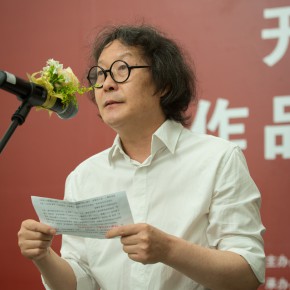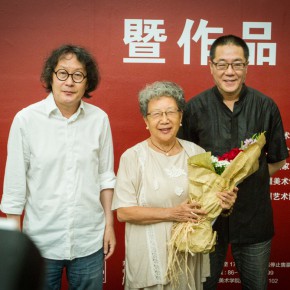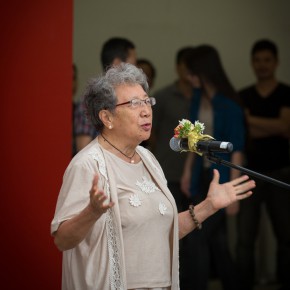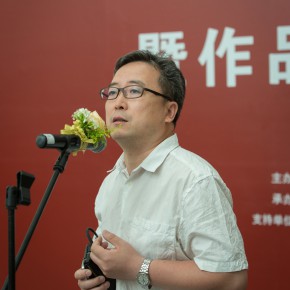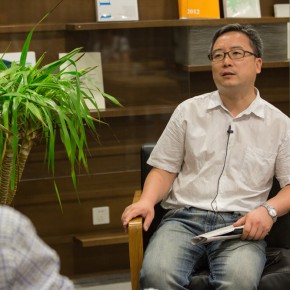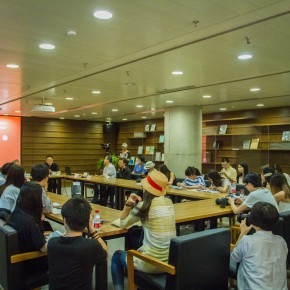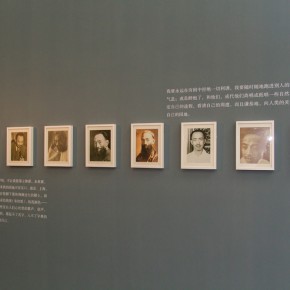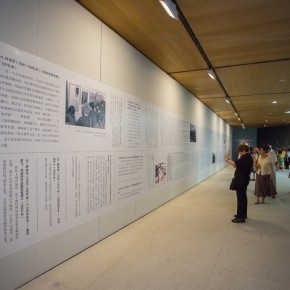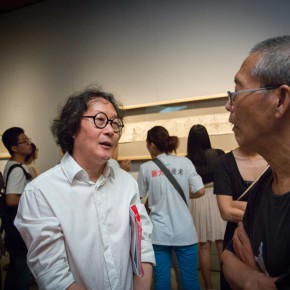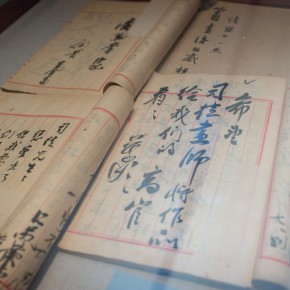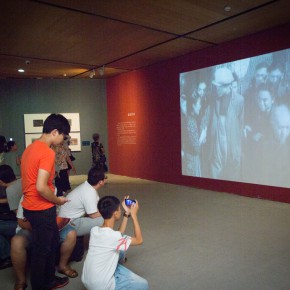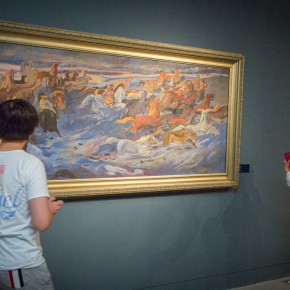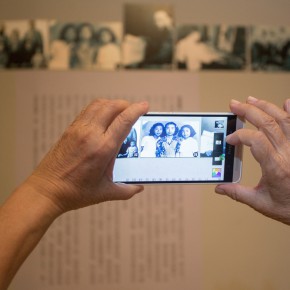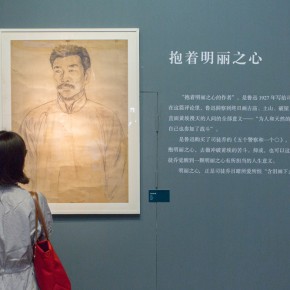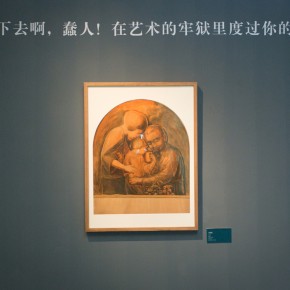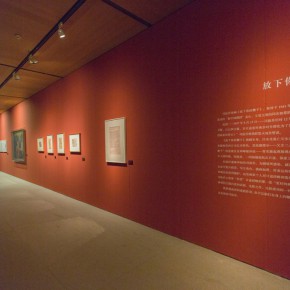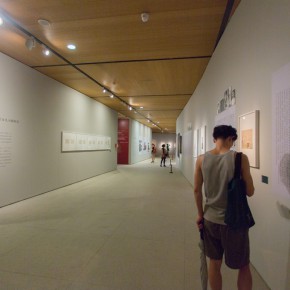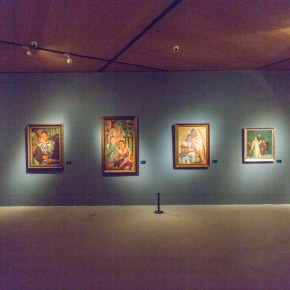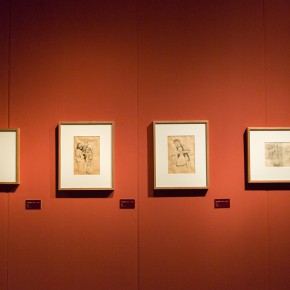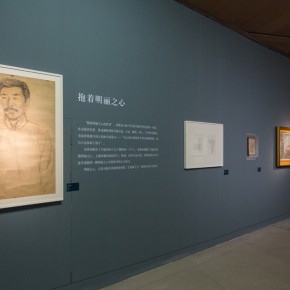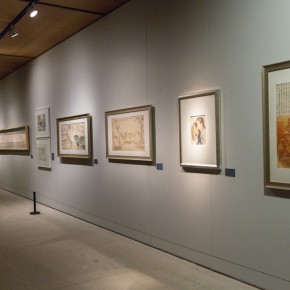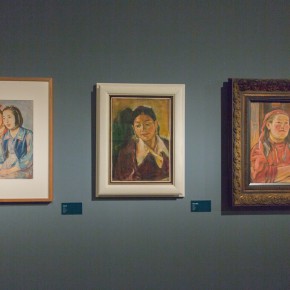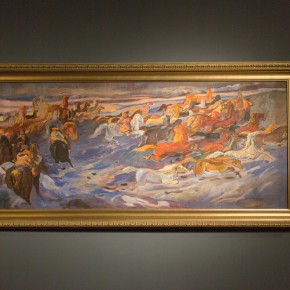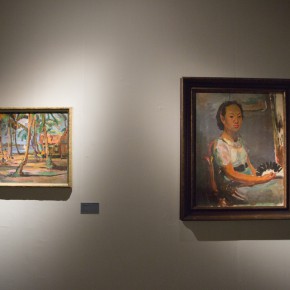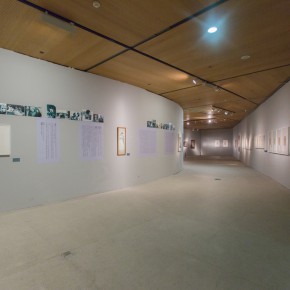
C.SSu-Tu(Situ Qiao), graduated from the Theological School of Peking University, wrote when he chose painting as his lifelong career in 1926, “Keep painting with tears in eyes, stupid! Devote your life to the prison of art.” Obviously, C.SSu-Tu knew well what he loved and he was willing to be the prisoner of art; At the same time, he knew well what he wanted. He was not willing to breathe quietly in the sky loft, but willing to go deep into soil and soul, sweating and breathing hard, with eyes opened wide and veins popping on forehead; Certainly, he knew well what kind of life he would face, but he was willing to suffer and do what a stupid had done, not caring about anything else.
He was 24 years old, and had nothing but belief and choice, even no educational background of painting. C. SSu-Tu just staggered on the path pigheadedly, with his efforts and resolution, and his weak body. With a beautiful mind, he painstakingly rose up on the art stage.
He depicted the dusts and poor in Beijing, the rosy glow and colorful birds in Southeast Asia; He finished the anti-Japanese Put Down Your Whip, and described the refugees, the father and daughter from the five disaster-hit provinces; He was “Hunting for Painting in Xinjiang,” which opened a colorful world in front of him; He once designed book cove for the new culture publication,s which were treasured by collectors because of his “wild whirlwind” style; He properly handled oil and gouache painting, water color and bamboo stick drawing; He with the hope in hear, turned the foul into ethereal, on whatever kind of papers...In him, the gradually forgotten legend and passion were filled, so he left numerous impressive works and paintings.
With the attitude to directly face common people’s life, he tried his best to express with lines, colors and shapes nearest to the soul, which won him with the praise and applauds from Lu Xun, Guo Moruo and other new artistic warriors during the “May 4th Movement”; He went through numerous ups and downs in practice, and finally formed his own style and attitude, for which he was admired by Wu Zuoren, Lv Sibai and other professional artists with overseas education background. Indeed, some may question about his means and ability in reflecting life, and criticized him without mercy.
As time goes into the 21st century and the year of 2014 has flied by half, the time and space have given us sufficient distance to look at C. SSu-Tu’s artistic practice from afar, and comment on its good or bad. Actually it is meaningless to praise or criticize his art. What is more important, is to understand C. SSu-Tu and his generation, the social value and significance in art history of their artistic choice and efforts in the past century. So, we must locate them at the specific times they were living in -- the real, miserable Chinese society in the first half of 20th century, shouldering the responsibility of protecting the sovereignty the country. It is obviously improper to measure or criticize purely from the artistic perspective, going beyond or seeing without believing the realistic but complicated reality. In a suffering and ever-changing era, artists’ self-conscious attitude was actually something more artistic than art itself. C. SSu-Tu has acted as the pioneer on how an artist responsibly, artistically and deeply reveals life and spirit in life. His achievements, contributions, this or that shortcoming, all existed because he was a pioneer.
Here, we would like to express our appreciation to C.SSu-Tu’s families, together with the National Museum of China, the National Art Museum of China, the Culture Bureau of Xinjiang Uygur Autonomous Region, Guangdong Museum, and Guangzhou Museum of Art for their great support. Without their support, the exhibition cannot be eventually realized. Also, we would thank the CAFA Art Museum team for their great efforts and hard works. But we would give our heartfelt and sincerest thanks to Ms. Feng Yimei--C. SSu-Tu’s wife, and a female intellectual standing behind C. SSu-Tu. Without her, there is no C. SSu-Tu; and without her, C. SSu-Tu may be pitifully forgotten by the art history. We specially curated a section names as “Rose Village,” with which we pay our tribute to the typical good wife of China. We hope the great audience will understand the infinite meanings of “Painting with Tears--C.SSu-Tu’s Love and Hatred Towards Art,” with the beliefs on art and Love.
August, 2014
Photo by Quan Jin/CAFA ART INFO
Courtesy of CAFA Art Museum, for further information please visit museum.cafa.com.cn.


